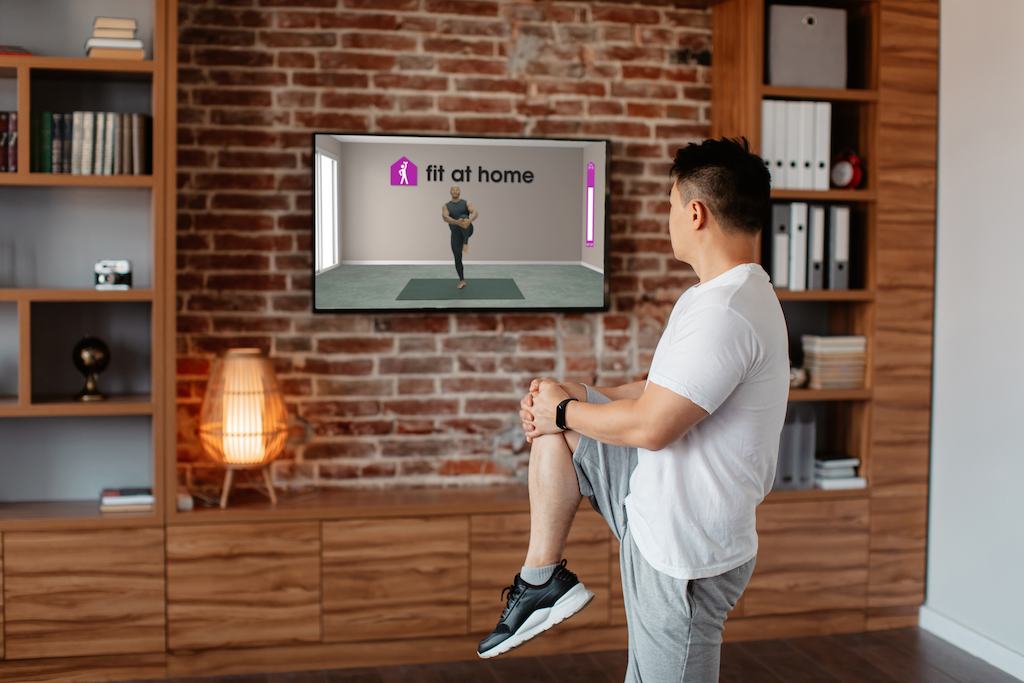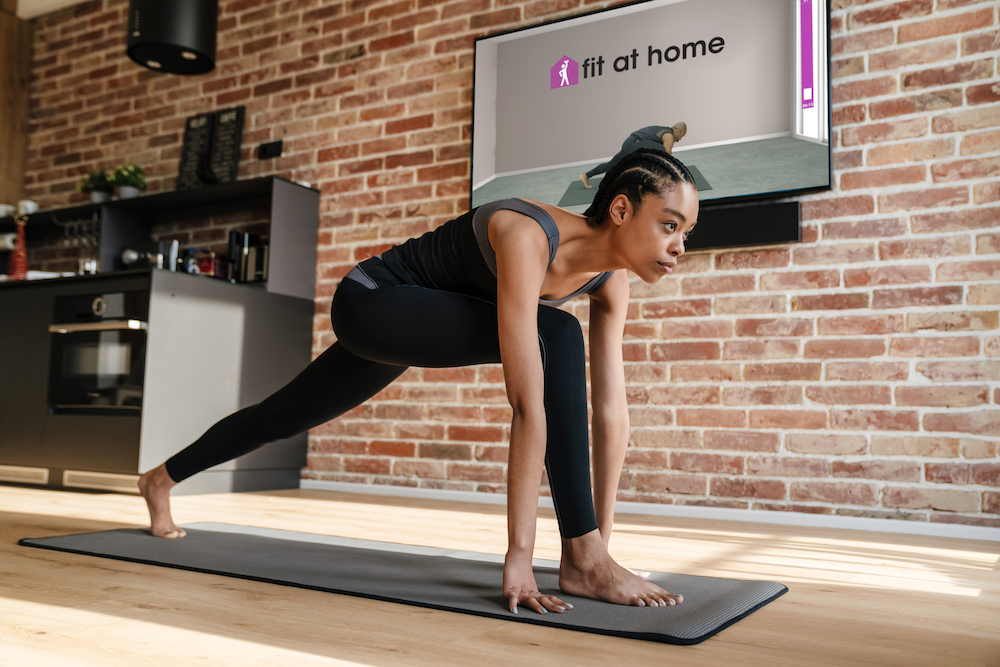Coordination is a key aspect of overall physical fitness that often goes unnoticed. Having good coordination means that your body’s various systems are working harmoniously, enhancing your ability to move seamlessly, prevent injuries, and excel in both daily activities and sports. We’ll explore five exercises that can help you improve your coordination, balance, and control.

Coordination is important
Coordination is a crucial aspect of human movement and overall physical function. It involves the harmonious interaction of various body systems, including the muscular, skeletal, nervous, and sensory systems. Effective coordination allows us to perform complex and precise movements, maintain balance, and carry out everyday activities with efficiency. Here’s why coordination is important:
- Efficient movement: Good coordination ensures that our muscles work together in a synchronized manner, reducing unnecessary strain and energy expenditure during movements. This efficiency is essential for conserving energy and preventing fatigue.
- Balance and stability: Coordination helps us maintain balance, whether we’re standing, walking, or engaging in dynamic activities. It enables us to make rapid adjustments to our body’s position, preventing falls and injuries.
- Motor skill mastery: Developing coordination improves our ability to execute fine and gross motor skills accurately. Whether it’s tying shoelaces, writing, playing a musical instrument, or participating in sports, coordination is key to mastering these skills.
- Sports performance: In sports and physical activities, coordination contributes to precise timing, accurate execution of movements, and fluid transitions between different actions. Athletes with better coordination tend to perform more effectively and reduce the risk of injuries.
- Cognitive function: Coordination involves the integration of sensory input, such as visual and proprioceptive feedback. This interaction between the brain and the body enhances cognitive functions like attention, concentration, and reaction time.
- Fall prevention: As we age, our coordination can decline, leading to an increased risk of falls. Maintaining and improving coordination through exercises can significantly reduce the likelihood of falls and associated injuries in older adults.
- Rehabilitation: Coordination exercises are often incorporated into rehabilitation programs to restore motor skills after injuries or surgeries. These exercises help individuals regain movement patterns and regain functional abilities.
- Neuromuscular development: Developing coordination during childhood and adolescence is crucial for proper neuromuscular development. It lays the foundation for lifelong physical competence and fitness.
- Confidence: A strong sense of coordination translates to greater confidence in one’s physical abilities. Feeling in control of your body boosts self-esteem and encourages participation in various activities.
- Daily activities: Coordination impacts our ability to perform routine tasks, such as getting dressed, cooking, driving, and even using digital devices. Improving coordination enhances our independence and quality of life.
In essence, coordination is the bridge that connects our intentions and actions, facilitating smooth and purposeful movement. It’s a skill that extends beyond the boundaries of athletics and fitness, influencing every facet of our lives. By engaging in coordination-enhancing exercises and activities, we can unlock our full movement potential and embrace a more capable and confident version of ourselves.
Your NUMBER ONE fitness app available on:

Coordination exercises
Here are several coordination exercises that you can incorporate into your workout routine to improve your balance, agility, and overall motor skills:
1. Single-leg balance:
Single-leg balance exercises are simple yet effective ways to enhance your coordination. Standing on one leg challenges your body’s stability, forcing your muscles and nervous system to work together to maintain balance. Start by holding the position for a few seconds and gradually increase the duration as you improve.
How to do it:
- Stand on one leg, keeping your core engaged.
- Find a focal point to help you maintain balance.
- Hold the position for 15-30 seconds on each leg.
- For an extra challenge, try closing your eyes while balancing.
2. BOSU ball exercises:
The BOSU ball is a versatile tool that adds an element of instability to your workouts. This instability engages your core and requires coordination to perform various exercises. Simple exercises like squats, lunges, and push-ups become more challenging on a BOSU ball.
Try this exercise: BOSU squat:
- Stand on the flat side of the BOSU ball.
- Perform squats by bending your knees and hips, lowering your body.
- Keep your core engaged and maintain balance.
- Push through your heels to return to the starting position.
3. Agility ladder drills:
Agility ladder drills are fantastic for improving coordination, quick footwork, and reaction time. These drills challenge your brain and muscles to work in sync as you navigate through the ladder’s rungs.
How to get started:
- Lay the agility ladder on the ground.
- Perform various footwork patterns: high knees, lateral shuffles, and crossover steps.
- Focus on maintaining a steady rhythm and precise foot placement.
4. Tai Chi:
Tai Chi is a martial art that emphasizes slow, controlled movements and deep breathing. It’s not only great for relaxation but also for enhancing coordination and balance. The deliberate and fluid motions require careful coordination between the upper and lower body.
Getting started with Tai Chi:
- Join a Tai Chi class or follow online tutorials.
- Practice slow, flowing movements, focusing on your breath and posture.
- Over time, you’ll notice improved coordination, flexibility, and relaxation.
5. Hopping and jumping variations:
Hopping and jumping exercises are excellent for developing dynamic coordination and explosive power. These movements require precise timing, balance, and control to land safely and efficiently.
Try this exercise: box jumps:
- Find a sturdy platform or box.
- Stand facing the box with your feet shoulder-width apart.
- Bend your knees and hips, then explosively jump onto the box.
- Land softly, using your leg muscles to absorb the impact.
Improving your coordination is a valuable investment in your overall fitness and well-being. By incorporating these exercises into your routine, you’ll enhance your ability to move gracefully, prevent injuries, and tackle physical challenges with confidence. Remember that consistency is key – practice these exercises regularly, and you’ll notice significant improvements in your coordination, balance, and control.
Improve your coordination with Fit at Home
At Fit at Home we have our Pilates & Fit workouts. Besides working on your coordination you will improve your balance, flexibility and strength. Lewis will help you to get better and better in Pilates and guide you through your fitness journey.

Home workouts are a practical and preferred way to achieve their health and wellness goals. Fit at Home is there for the whole family, cost-effectiveness, and the flexibility it offers to tailor workouts to individual preferences and schedules.